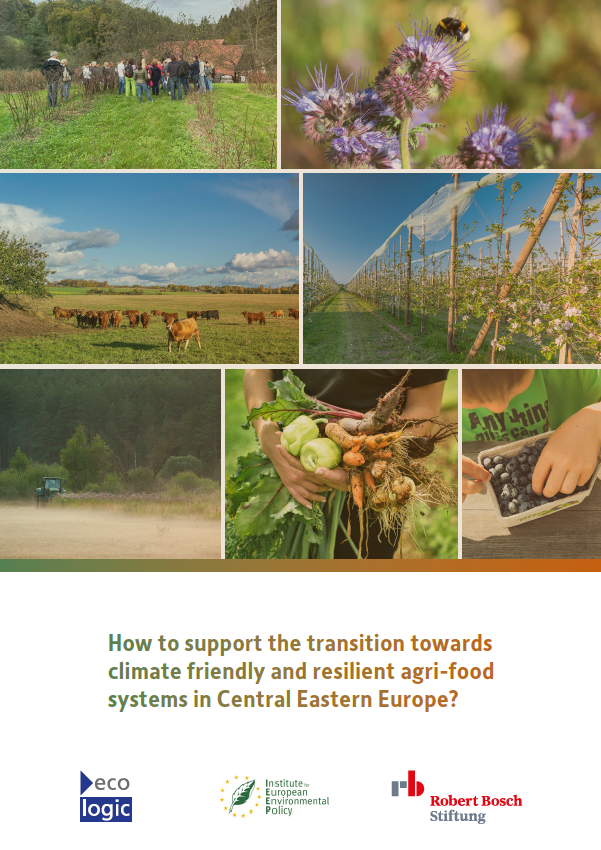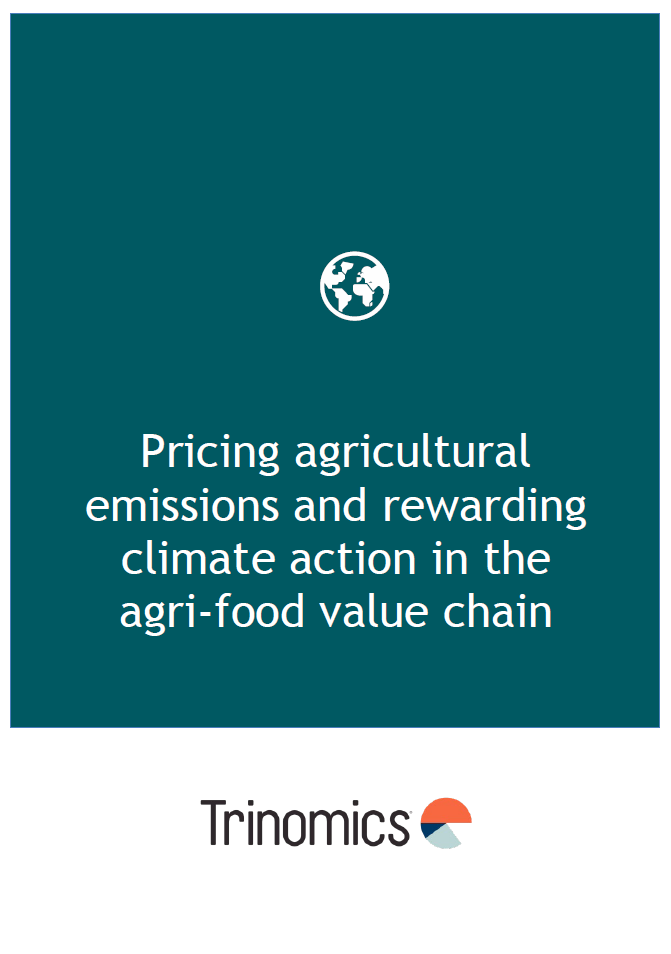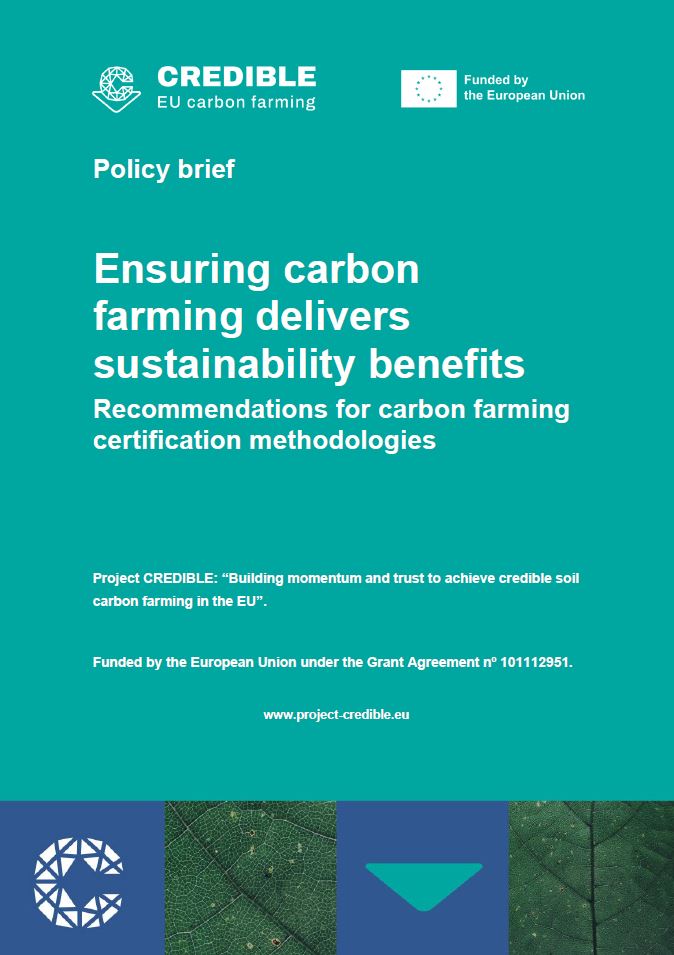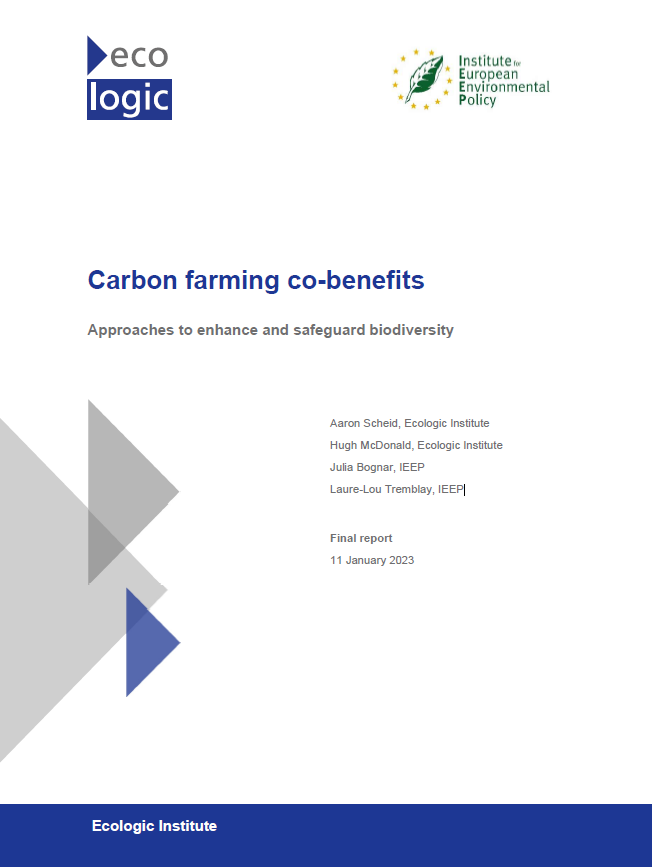Photo: Shumwai,CC BY-SA 4.0, via Wikimedia Commons, cover: Ecologic Institute, 2025
Temporary Carbon Units from Carbon Farming and EU Agri-food Climate Policy
Assessment of risks, opportunities, and alternatives for promoting carbon farming
- Publication
- Citation
McDonald, H., Siemons, A., Fallasch, F., Gardiner, J., Scheid, A., Scheffler, M., and Wiegman, K. (2025). Temporary carbon units from carbon farming and EU agri-food climate policy: Assessment of risks, opportunities, and alternatives for promoting temporary carbon sequestration. Ecologic Institute, Berlin.
This report, by Ecologic Institute and Öko-Institut, explores how potential EU policy instruments – such as the proposed Agricultural Emissions Trading System (AgETS), Mandatory Climate Standards (MCS), and public procurement programmes – can integrate carbon farming while maintaining high environmental standards. The study highlights both the opportunities and the pitfalls of linking these policies to the Carbon Removals and Carbon Farming Regulation (CRCF) and its system of temporary certified carbon units – and investigates alternative approaches to promote carbon farming.
Carbon farming: opportunities and risks
Carbon farming measures such as soil carbon enhancement, agroforestry, and peatland rewetting not only mitigate climate change but also deliver other important environmental benefits such as enhancing biodiversity. However, their climate impact can be reversed, resulting in only temporary mitigation. In addition to these reversal risks, several weaknesses in the current draft CRCF certification methodologies regarding proposed rules for dealing with non-permanence, ensuring additionality and quantification approaches risk generating low-quality units. Without stringent liability rules, quantification standards, and additionality checks, these units could overstate climate benefits. Ultimately, using such low-quality units for offsetting purposes risks undermining mitigation claims and threatening environmental integrity.
Avoiding offset pitfalls in agri-food climate policies
Promising new market-based agri-food climate policies are under consideration by the European Commission, such as an AgETS. We consider the specific question of whether temporary CRCF units based on carbon farming should be integrated into the proposed agri-food climate policies. We conclude that integrating temporary CRCF units as offsets within proposed agri-food climate policies would likely undermine their effectiveness. Accordingly, offsetting be excluded and that the use of CRCF units be limited to contribution-based approaches that channel funding toward carbon farming without claiming equivalent emission reductions elsewhere. While a public procurement programme for CRCF units would offer weaker incentives for emission cuts, it could still provide value if it avoided offset claims.
Integrating with the Common Agricultural Policy
A major challenge identified is the overlap between the CRCF and the Common Agricultural Policy (CAP). This creates risks of double funding and non-additionality, which could undermine the credibility of EU mitigation claims. We explore models for how the CAP and CRCF can interact, including the risks and potential for hybrid models that combine the predictability of CAP payments with the performance incentives of CRCF finance, and the need for clear legal and administrative safeguards.
Targeted activity-based payments offer an alterative approach to promote carbon farming. They reward farmers for implementing specific climate-friendly practices, a simpler and lower cost approach well-suited to some types of temporary carbon farming activities. Looking ahead to the post-2027 Common Agricultural Policy (CAP) reform, we highlight opportunities for implementing activity-based payments – both within and beyond the CAP.







